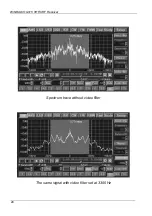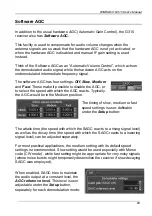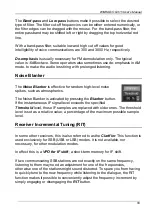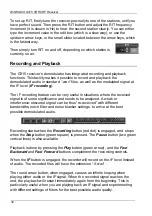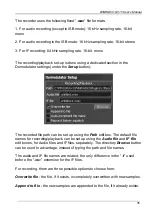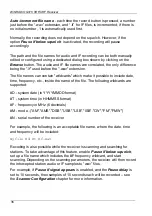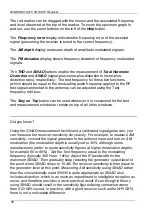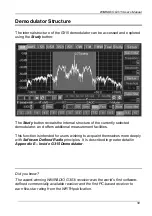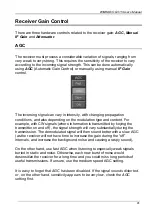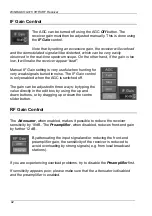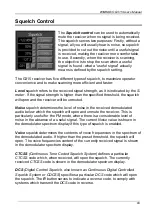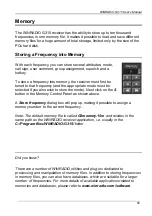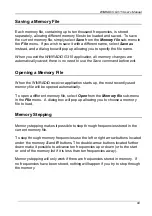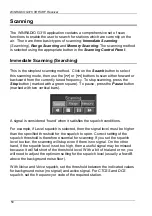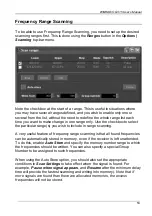
WiNRADiO G315 VHF/UHF Receiver
38
The red marker can be dragged with the mouse and the associated frequency
and level observed at the top of the marker. To zoom the spectrum graph in
and out, use the zoom buttons on the left of the
Help
button.
The
Frequency error
display indicates the frequency error of the received
signal (presuming the receiver is tuned to the correct frequency).
The
AM depth
display measures depth of amplitude modulated signals.
The
FM deviation
display shows frequency deviation of frequency modulated
signals.
The
THD
and
SINAD
buttons enable the measurement of
Total Harmonic
Distortion
and
SINAD
(signal-plus-noise-plus-distortion to noise-plus-
distortion ratio), respectively. The test frequency for these two functions
(which should be equal to the modulating audio frequency applied to the RF
test signal connected to the antenna) can be adjusted using the Test
frequency edit box.
The
Stay on Top
button can be used whenever it is convenient for the test
and measurement window to remain on top of all other windows.
Did you know?
Using the SINAD measurement facility and a calibrated signal generator, you
can measure the receiver sensitivity very easily. For example, to measure AM
sensitivity, connect the signal generator to the antenna input and turn on AM
modulation (the modulation depth is usually set to 30%, although some
manufacturers prefer to quote sensitivity figures at higher modulation depths,
for example 60 or 80%). Set the Test frequency equal to the modulating
frequency (typically 400 Hz or 1 kHz). Adjust the IF bandwidth for the
maximum SINAD. Then gradually keep reducing the generator output level to
the point when SINAD drops to 10 dB. The receiver sensitivity is then equal to
the generator level at this point. Measuring AM sensitivity using SINAD rather
than the conventionally used S+N/N is quite appropriate as SINAD also
includes distortion, which is as much an impediment to intelligible reception as
noise, and therefore provides a more practical result. Even though in theory
using SINAD should result in the sensitivity figures being somewhat worse
than if S+N/N is used, in practice, with a good receiver such as the WR-G315,
there is not a noticeable difference.

